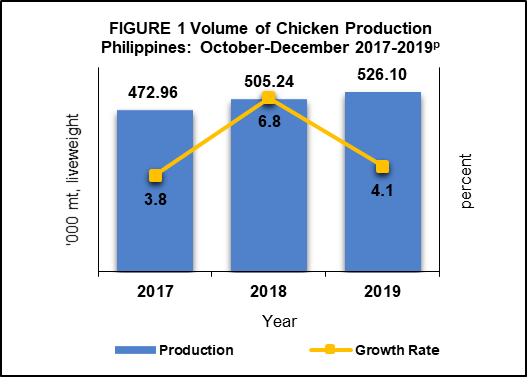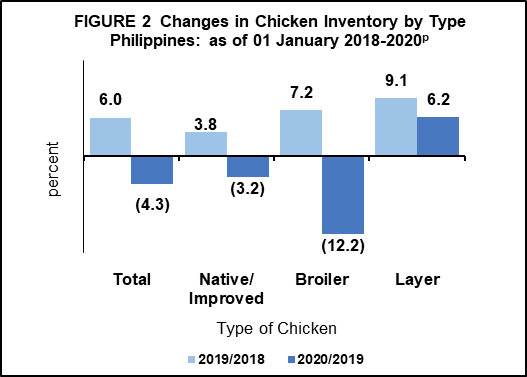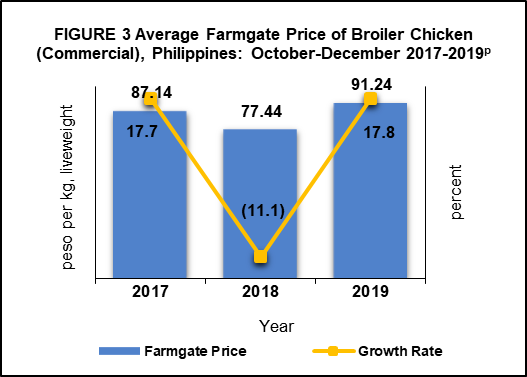The October to December 2019 total chicken production of
Relative to their levels in 2018, 12 regions registered increases in chicken production during the period. In terms of growth rate, Central Luzon posted the highest growth of 8.5 percent, from
Among the regions, Central Luzon was the highest producer of chicken. This was followed by CALABARZON and Northern Mindanao with corresponding production levels of

As of 01 January 2020, the total inventory of chicken was estimated at
Among the regions, the highest inventory of native/improved chicken of

The average farmgate price of broiler chicken in commercial farms in October to December 2019 was
During the period, the highest farmgate price was recorded in October at

TECHNICAL NOTES
This Chicken Situation Report presents the chicken industry in terms of volume of production, inventory by type, and average farmgate price. The report was prepared to serve as ready reference for PSA’s various clients and stakeholders in the agriculture sector. It is released quarterly in January, May, August and November every year.
Concepts and Definitions
Volume of production refers to the volume of locally-raised chicken disposed for dressing including those which were shipped out to other regions/provinces for dressing. This is expressed in metric tons, liveweight.
Inventory refers to the actual number of chicken present in the farm as of a specific reference date.
Farmgate price refers to the price received by raisers for their produce at the location of farm. Thus, marketing costs such as transport and other marketing cost (if any) incurred in selling the produce are not included in the farmgate prices.
ROSALINDA P. BAUTISTA
Assistant Secretary
Deputy National Statistician
Sectoral Statistics Office
